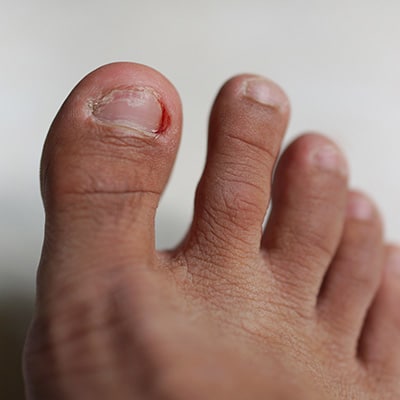
This may not be the exact look of your condition. Please confirm your diagnosis with your dermatologist.
What are they?
Ingrown nails occur when a nail grows into rather than over the surrounding skin. Ingrown nails occur most often in the big toe. Ingrown nails are a common condition that can become extremely painful and could become infected unless proper treatment is sought.
The overwhelming majority of ingrown nail cases are due to improper footwear, specifically, cramped shoes with insufficient room in the toes for proper nail growth. Ingrown nails are sometimes the result of poor nail cutting skills or trauma to the toe which injures the flesh and causes irregular nail growth.
Symptoms?
Ingrown nails are distinguished by pain along the side or sides of the affected nail. This pain increases with the continued wearing of ill-fitting shoes. Often, the pain is so intense that even the slightest pressure can cause extreme discomfort.
Infection signs such as redness, swelling and the discharge of pus or other bodily fluids are signs of a possible ingrown nail. When these infection signs occur, a medical exam by your dermatologist is in order.
Could this be what you have?
In nearly all cases, ingrown nails occur in people who wear poorly fitted shoes. Those shoes, coupled with a work obligation or lifestyle of standing or walking, can both accelerate the problem and intensify the symptoms.
People who do not correctly cut their nails are also at increased risk of ingrown nails.
Treatment Options @ Pinnacle
The first-step to an ingrown nail is to soak it in warm water with salts and to avoid the shoes that caused the condition. In addition, antibacterial ointments may help reduce the risk of infection.
Should this fail, the usual next step is the complete removal of the affected nail by your Dermatologist.